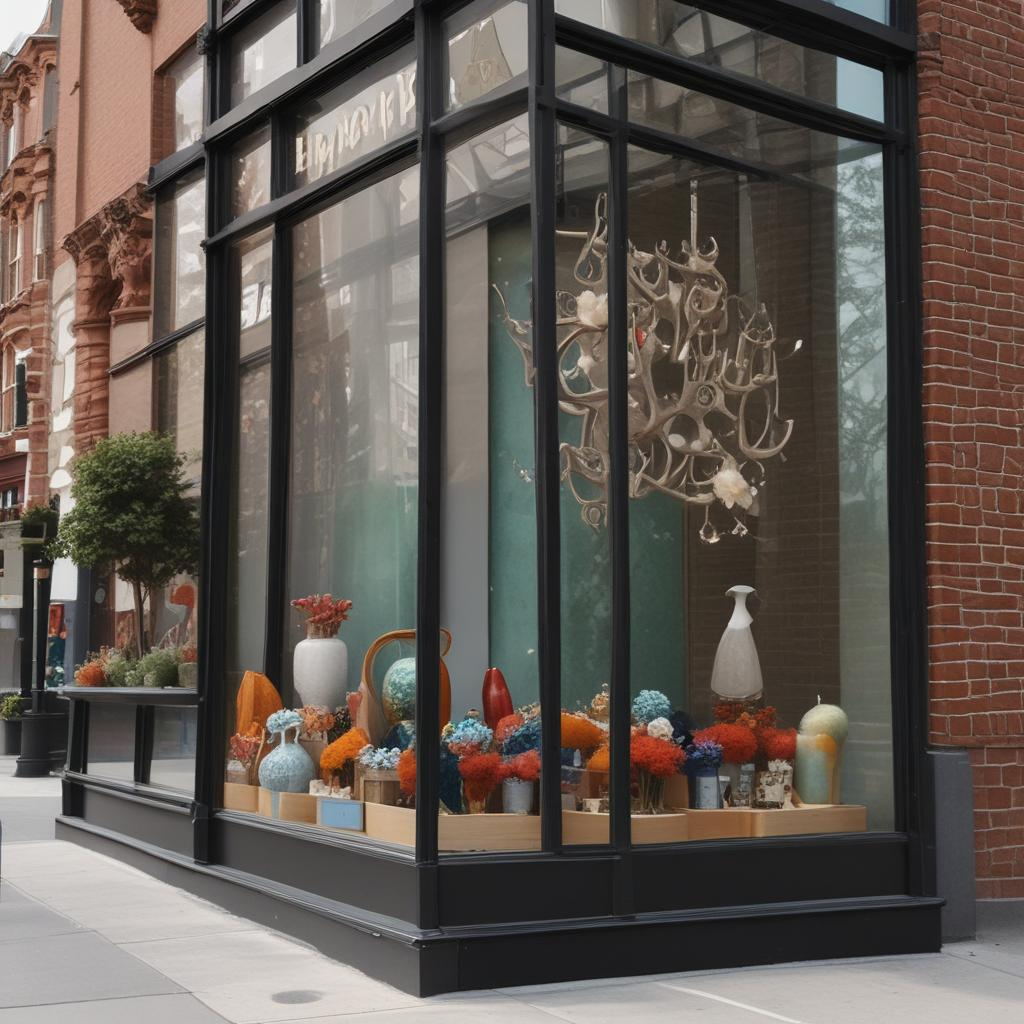In the competitive retail landscape, attracting customers starts right from the front window. A creative and engaging window display not only draws attention but also sets the tone of the store's brand and the experiences that await inside. This article offers insightful tips on how to craft window displays that capture interest and drive foot traffic, helping stores convert passersby into customers.

1. Understand Your Audience
Before diving into design and decoration, it's critical to know who your target customers are. Understanding the demographic and psychographic profiles of your audience can greatly influence your design choices. For example, vibrant and playful themes might appeal more to younger audiences, while elegant and minimalist displays could attract an upscale market.
2. Tell a Story
Humans are naturally drawn to narratives. Design your window display to tell a story related to your brand or products. This could involve a seasonal theme, a celebration, or a lifestyle concept. Story-driven displays not only engage viewers but also give your products context and emotional appeal.
3. Use of Color
Colors influence mood and perception. They can make a window display pop and stand out from a distance. Selecting the right color palette that harmonizes with your brand identity and resonates with your audience can make a significant difference. Consider seasonal colors to stay relevant and vibrant.
4. Play with Lighting
Lighting can dramatically change the ambiance of a display and the way colors and objects appear. It can spotlight products or create depth through shadows. Integrating varied lighting techniques can capture the attention of passersby at different times of the day and under different weather conditions.
5. Incorporate Movement
Motion captures attention more than stillness. Adding elements that move, such as rotating displays, digital screens, or even gently swaying decorations, can draw eyes and interest. Movement can be subtle to add a layer of interest or dynamic to serve as the centerpiece of your display.
6. Integrate Technology
Incorporating digital elements can bring a modern touch to traditional window displays. Screens can show changing content such as videos, animations, or interactive content. Augmented reality experiences can also engage customers, encouraging them to interact with the display through their smartphones.
7. Focus on Seasonality
Aligning your display with holidays, seasons, or local events can make your storefront timely and relevant. Seasonal displays can be particularly effective in drawing in customers by tapping into their current interests and the atmospheric feel of the season.
8. Keep It Simple
While complexity might seem tempting, sometimes less is more. A simple, clean, and well-organized display can attract those overwhelmed by too much visual information. A minimalist approach can highlight key products effectively and can be particularly appealing in upscale markets.
9. Update Regularly
A dynamic window display can keep potential customers curious and engaged. Regular updates not only reflect the ever-changing nature of retail, from new products to seasonal shifts, but also gives repeat passersby a reason to stop and look—and potentially enter the store.
10. Leverage Impulse Buys
Positioning products that are often purchased on impulse near the front of the display can tempt customers inside. These are typically lower-priced items that can be easily justified by shoppers. Strategically placing impulse buy products can effectively convert window shoppers into actual customers.
11. Use High-Quality Materials
The quality of the materials used in your window display reflects the quality of your brand. Using durable, attractive, and high-quality materials can convey luxury and care to viewers. This is particularly essential for brands that wish to position themselves in the premium market segment.
12. Create Interactive Elements
Interactive displays can actively engage potential customers. Whether it's a game, a puzzle, or a unique way of presenting products, interactive elements can be memorable and shareable. This not only increases engagement but can also lead to greater social media exposure if customers share their experiences online.
Conclusion
The power of an effective window display should not be underestimated. It serves as a silent ambassador for your store, engaging the public and transforming casual onlookers into potential customers. By implementing these creative tips, retailers can design window displays that not only attract attention but also enhance the overall brand experience, increasing both foot traffic and sales.


.jpg)






.jpg)



0 Comments